Meiosis
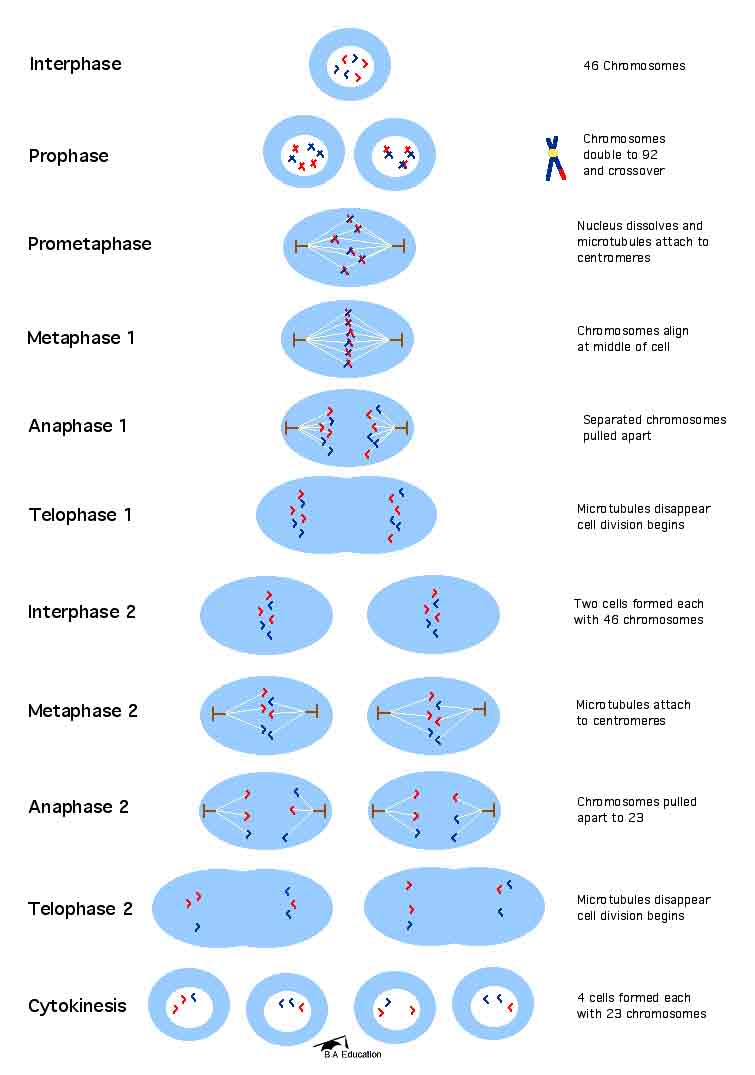
CHROMOSOMES
Chromosome: a very long DNA molecule and associated proteins, that carry portions of the hereditary information of an organism.
a. Structure of a chromosome (Typical metaphase chromosome):
A chromosome is formed from a single DNA molecule that contains many genes. A chromosomal DNA molecule contains three specific nucleotide sequences which are required for replication: a DNA replication origin; a centromere to attach the DNA to the mitotic spindle.; a telomere located at each end of the linear chromosome.
The DNA molecule is highly condensed. The human DNA helix occupy too much space in the cell. Small proteins are responsible for packing the DNA into units called nucleosomes.
b. Stained chromosomes:
Chromosomes are stained with A-T (G bands) and G-C (R bands) base pair specific dyes.
When they are stained, the mitotic chromosomes have a banded structure that unambiguously identifies each chromosome of a karyotype. Each band contains millions of DNA nucleotide pairs which do not correspond to any functional structure.
Adapted from K.F. Jorgenson, J.H. van de Sande, and C.C. Lin, Chromosoma 68:287-302, 1978.
c. Karyotype of a male:
The human haploid genome contains 3,000,000,000 DNA nucleotide pairs, divided among twenty two (22) pairs of autosomes and one pair of sex chromosomes.
MALE REPRODUCTIVE SYSTEM
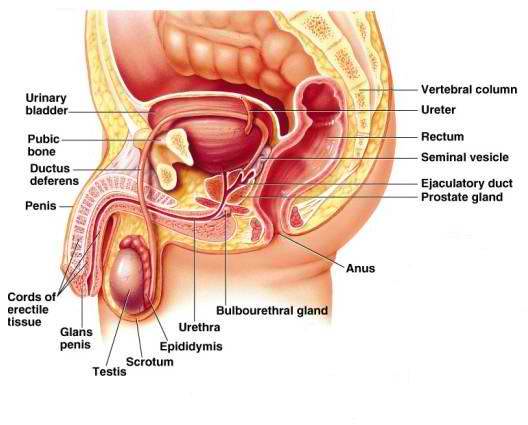
SPERM CELL
The term sperm is derived from the sperma (meaning "seed") and refers to the male reproductive cells. In the types of sexual reproduction known as anisogamy and oogamy, there is a marked difference in the size of the gametes with the smaller one being termed the "male" or sperm cell. A uniflagellar sperm cell that is motile is referred to as a spermatozoon, whereas a non-motile sperm cell is referred to as a spermatium. Sperm cells cannot divide and have a limited life span, but after fusion with egg cells during fertilization, a new organism begins developing, starting as a totipotent zygote.[citation needed] Sperm develops in the testicles.
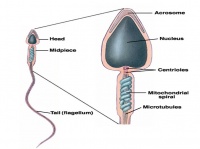
SPERMATOGENESIS-production of sperm cell
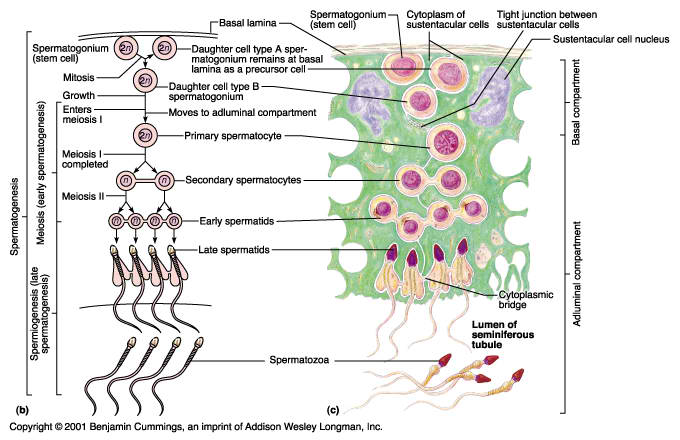
FEMALE REPRODUCTIVE SYSTEM
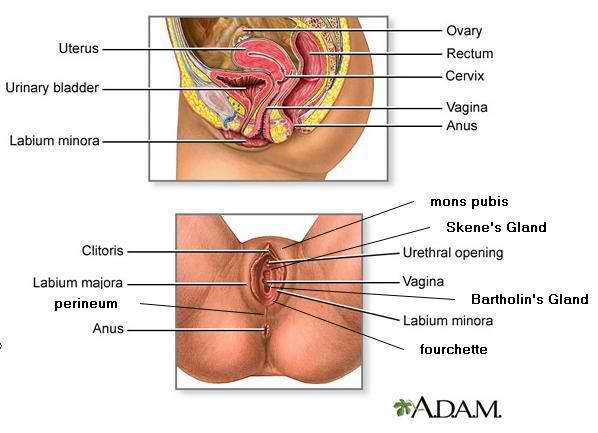
OOGENESIS-production of egg cell
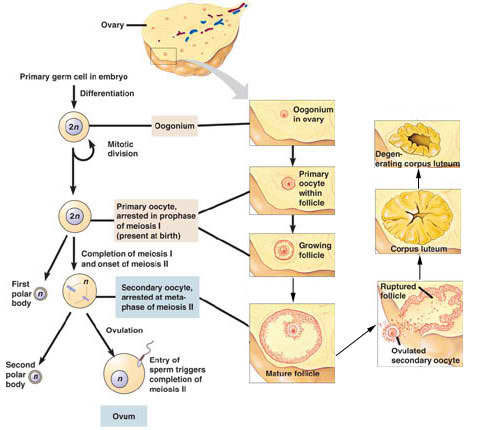
MAMMARY GLAND
A mammary gland is an organ in female mammals that produces milk to feed young offspring. Mammals get their name from the word "mammary". In ruminants such as cows, goats, and deer, the mammary glands are contained in their udders. The mammary glands of other mammals that have more than two breasts, such as dogs and cats, are sometimes called dugs.
Structure
The basic components of a mature mammary gland are the alveoli (hollow cavities, a few millimetres large) lined with milk-secreting cuboidal cells and surrounded by myoepithelial cells. These alveoli join up to form groups known as lobules, and each lobule has a lactiferous duct that drains into openings in the nipple. The myoepithelial cells can contract under the stimulation of oxytocin thereby excreting milk secreted from alveolar units into the lobule lumen toward the nipple, where it collects in sinuses of the ducts. As the infant begins to suck, the hormonally (oxytocin) mediated "let down reflex" ensues and the mother's milk is secreted – not sucked from the gland – into the baby's mouth.
All the milk-secreting tissue leading to a single lactiferous duct is called a "simple mammary gland"; a "complex mammary gland" is all the simple mammary glands serving one nipple. Humans normally have two complex mammary glands, one in each breast, and each complex mammary gland consists of 10–20 simple glands. The presence of more than two nipples is known as polythelia and the presence of more than two complex mammary glands as polymastia.
To keep the correct polarized morphology of the lactiferous duct tree requires another essential component - mammary epithelial cells extracellular matrix (ECM), which together with adipocytes, fibroblast, inflammatory cells etc. constitute mammary stroma.Mammary epithelial ECM mainly contains myoepithelial basement membrane and the connective tissue. They not only help to support mammary basic structure, but also serve as a communicating bridge between mammary epithelials and their local and global environment throughout this organ's development.
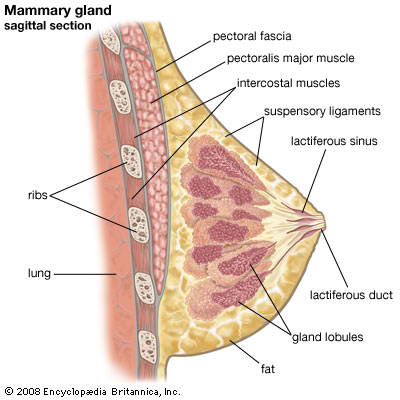
SEX HORMONES
Sex steroids, also known as gonadal steroids, are steroid hormones that interact with vertebrate androgen or estrogen receptors.Their effects are mediated by slow genomic mechanisms through nuclear receptors as well as by fast nongenomic mechanisms through membrane-associated receptors and signaling cascades.The term sex hormone is nearly always synonymous with sex steroid. The non-steroid hormones luteinizing hormone, follicle-stimulating hormone and gonadotropin-releasing hormone are usually not regarded as sex hormones, although they play major sex-related roles.
Production
Natural sex steroids are made by the gonads (ovaries or testes),by adrenal glands, or by conversion from other sex steroids in other tissue such as liver or fat.
Synthetic sex steroids
There are also many synthetic sex steroids. Synthetic androgens are often referred to as anabolic steroids. Synthetic estrogens and progestins are used in methods of hormonal contraception. Ethinylestradiol is a semi-synthetic estrogen. Specific compounds that have partial agonist activity for steroid receptors, and therefore act in part like natural steroid hormones, are in use in medical conditions that require treatment with steroid in one cell type, but where systemic effects of the particular steroid in the entire organism are only desirable within certain limits.
Types
In many contexts, the two main classes of sex steroids are androgens and estrogens, of which the most important human derivatives are testosterone and estradiol, respectively. Other contexts will include progestagen as a third class of sex steroids, distinct from androgens and estrogens. Progesterone is the most important and only naturally-occurring human progestagen. In general, androgens are considered "male sex hormones", since they have masculinizing effects, while estrogens and progestagens are considered "female sex hormones"although all types are present in each sex, albeit at different levels.
Sex steroids include:
Androgens:
Anabolic steroids
Androstenedione
Dehydroepiandrosterone
Dihydrotestosterone
Testosterone
Estrogens:
Estradiol
Estriol
Estrone
Progestagens:
Progesterone
Progestins striker